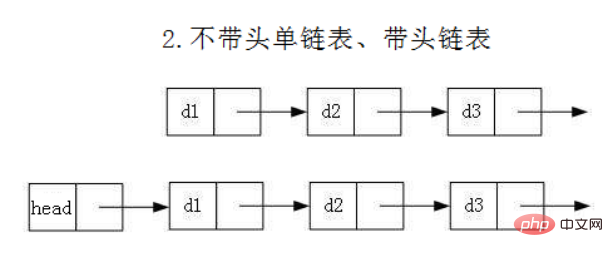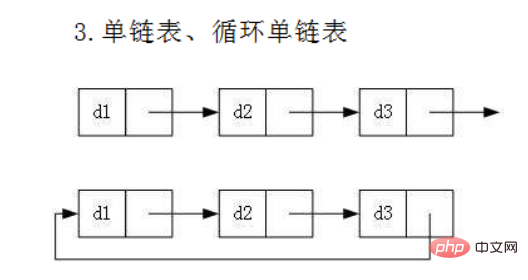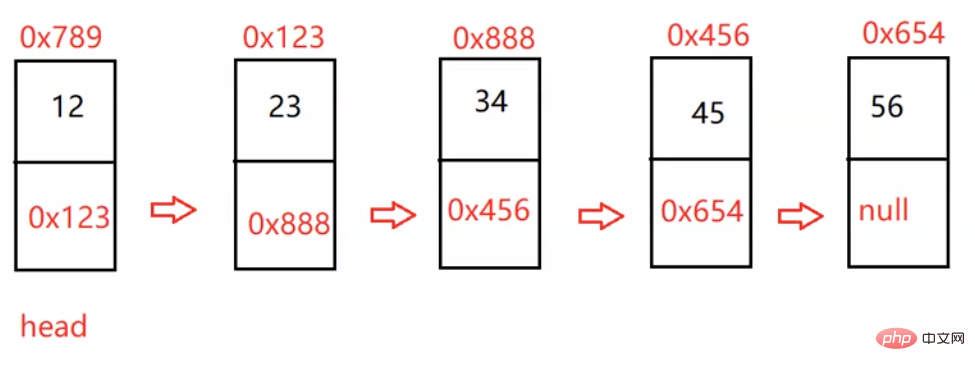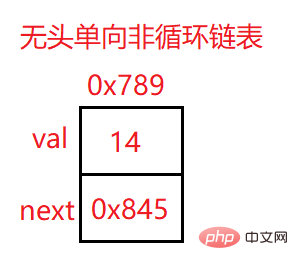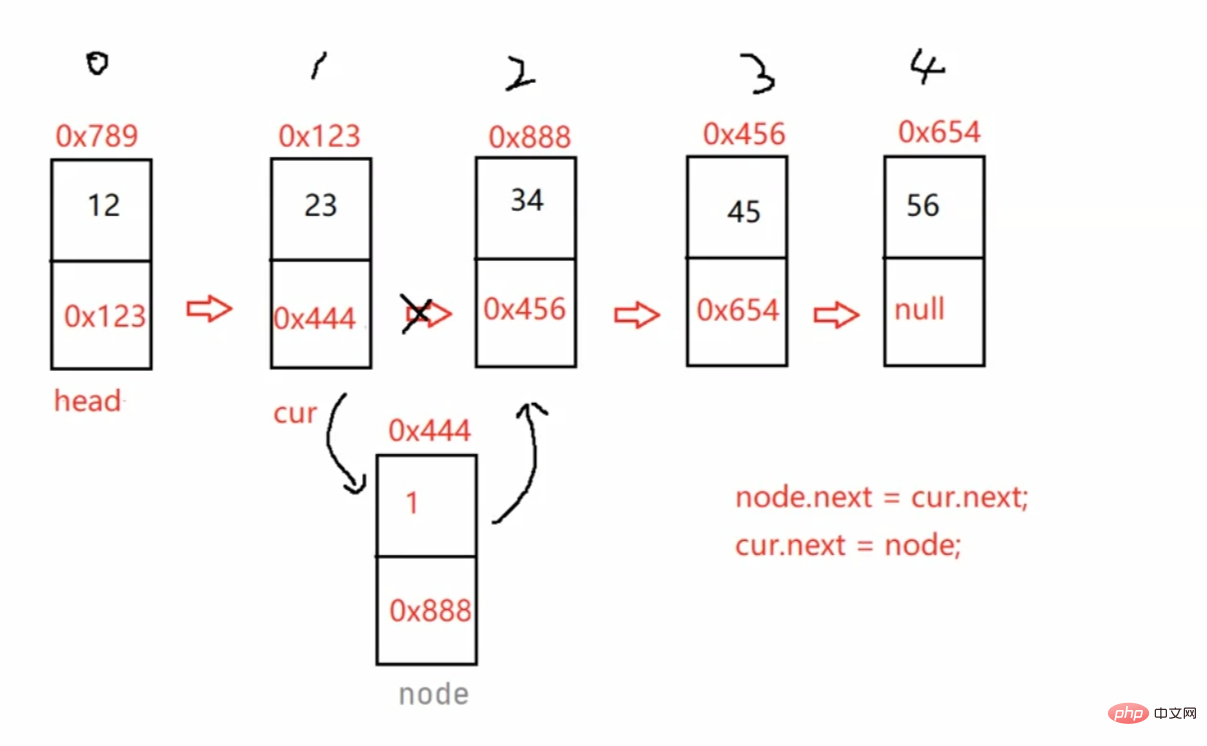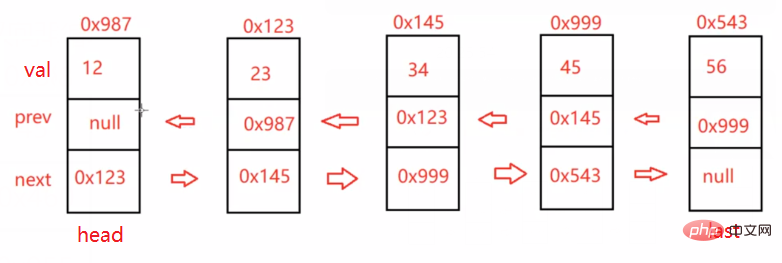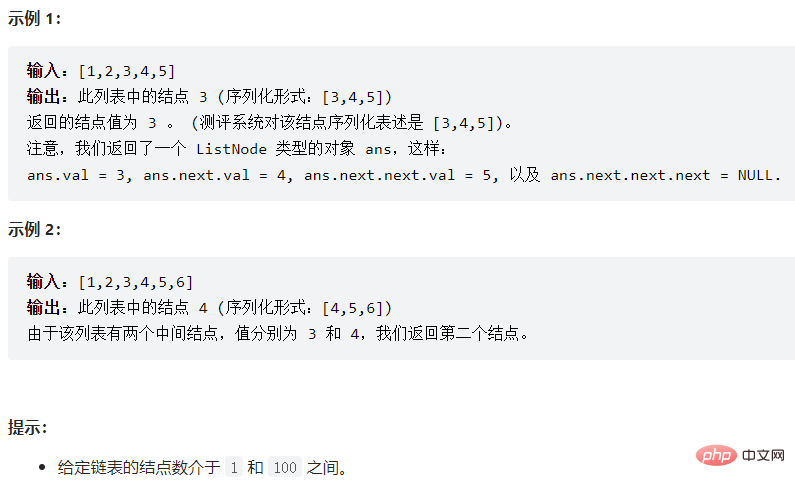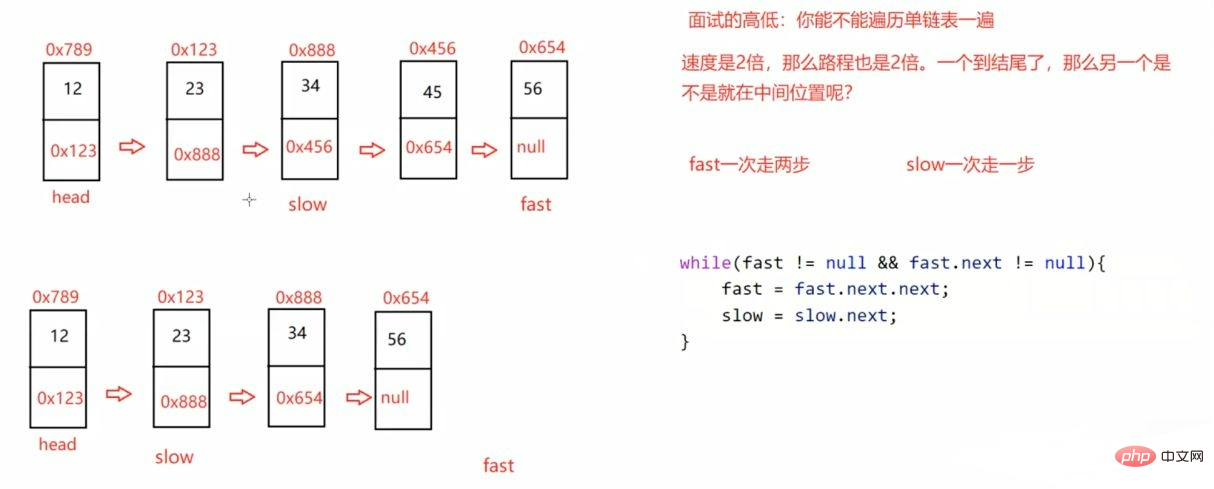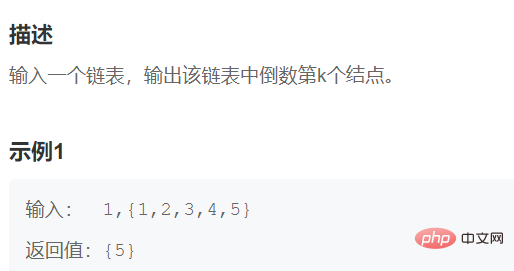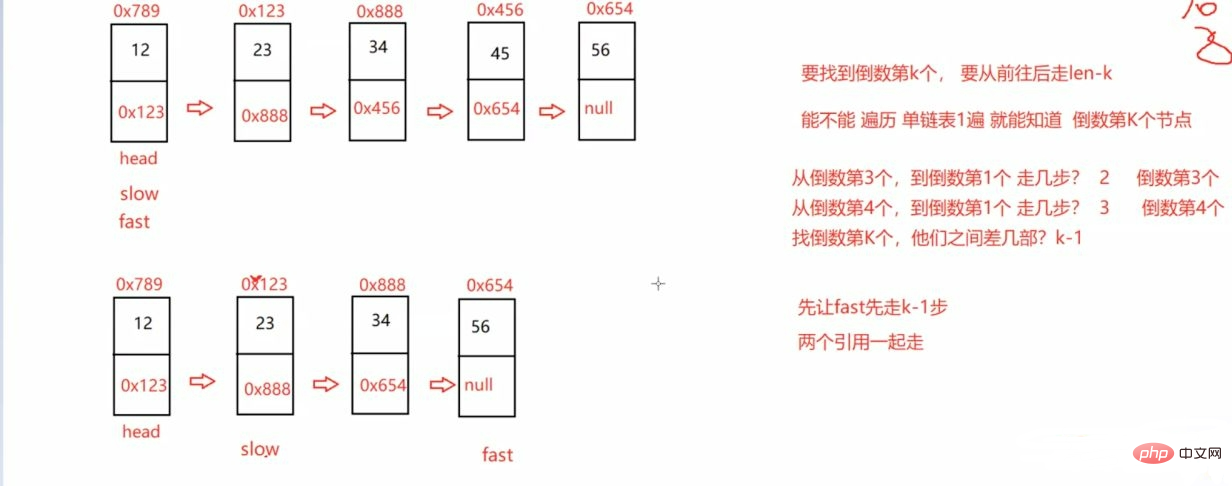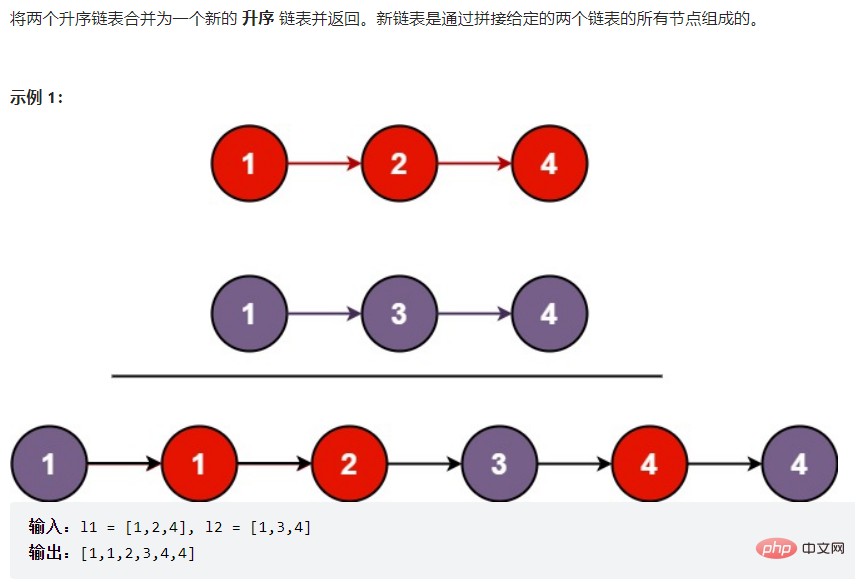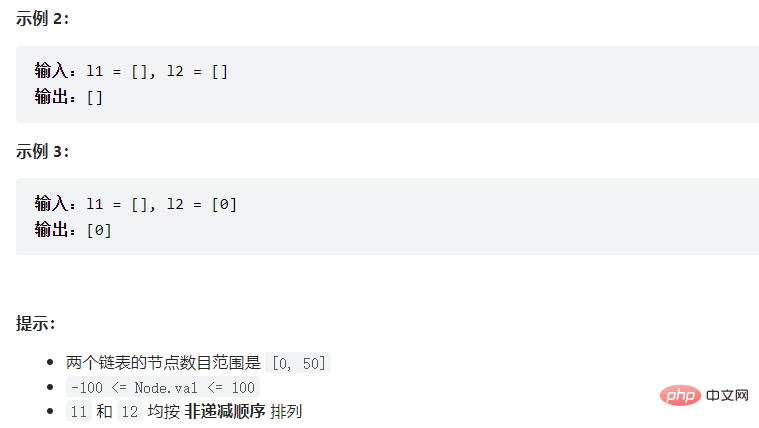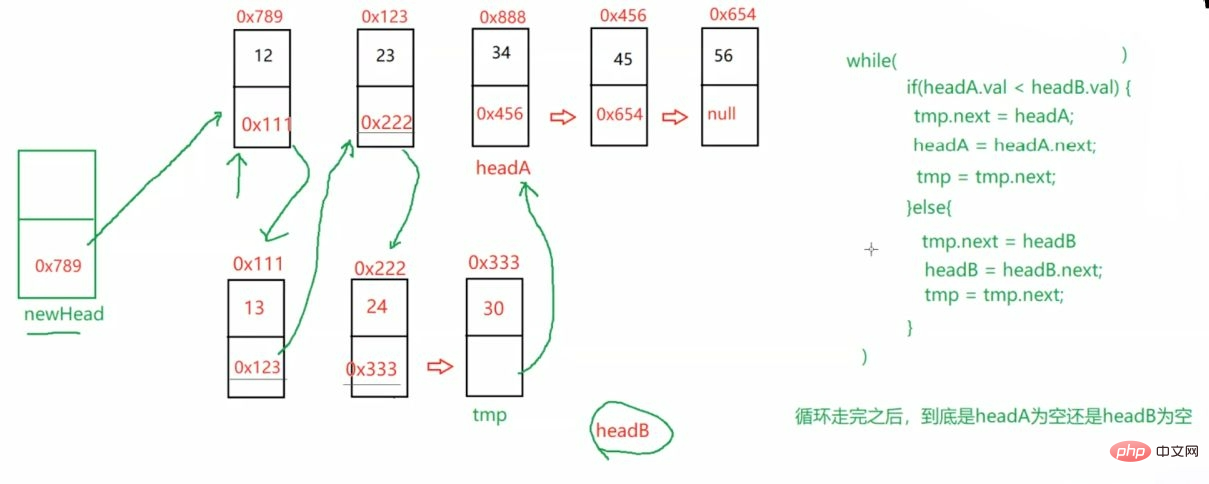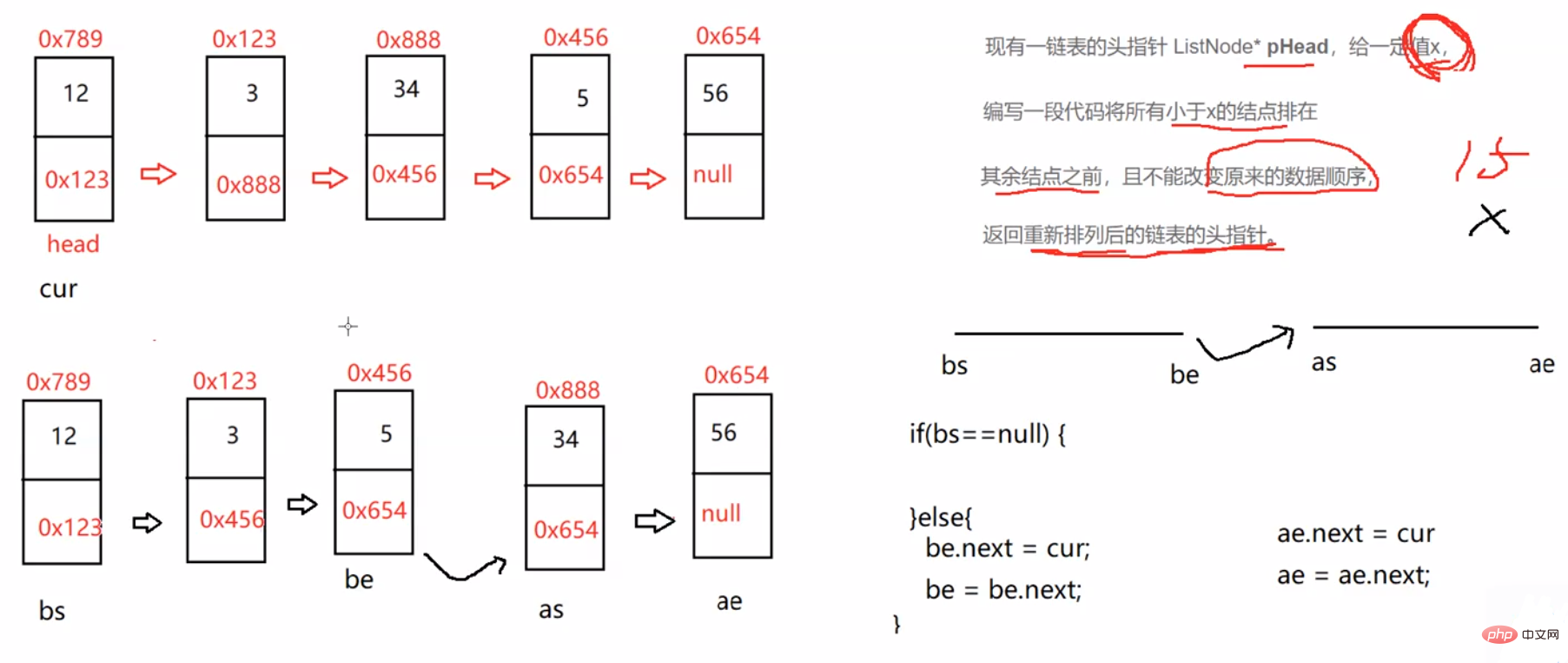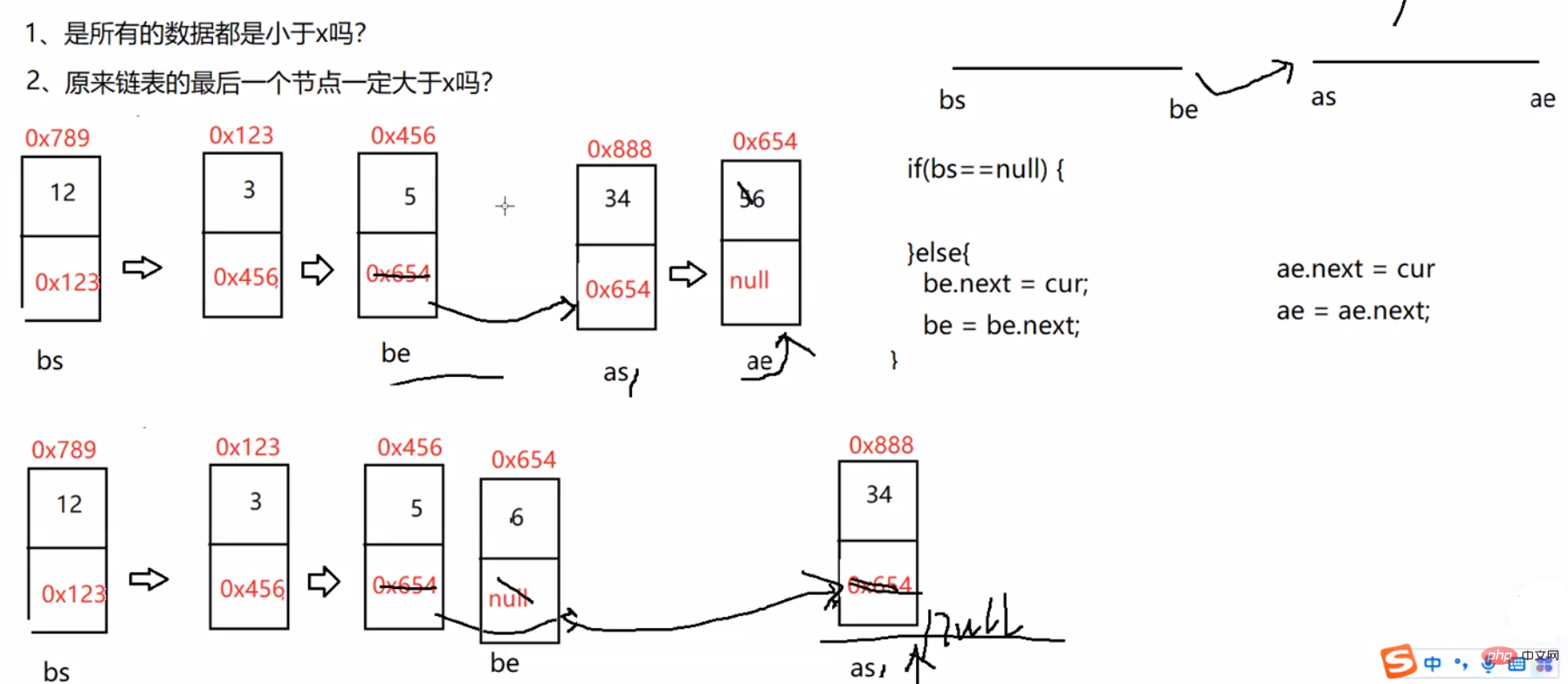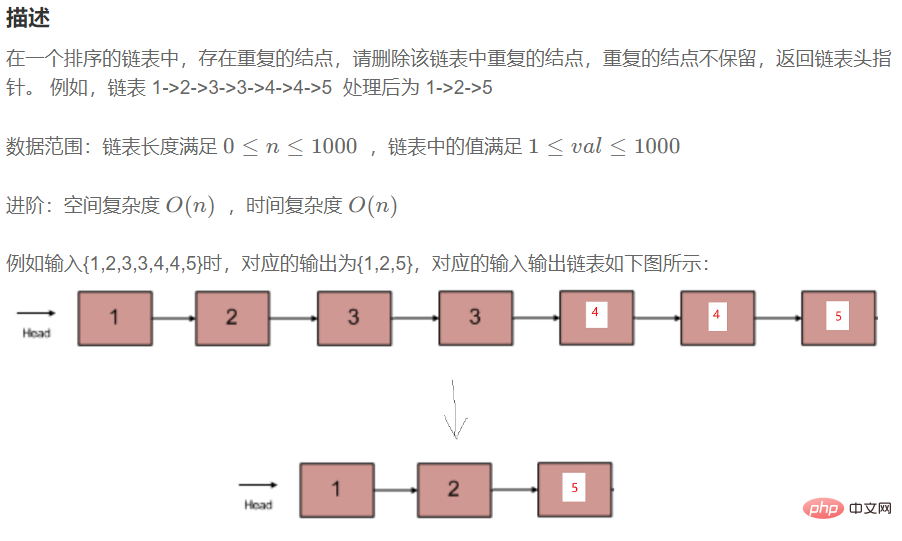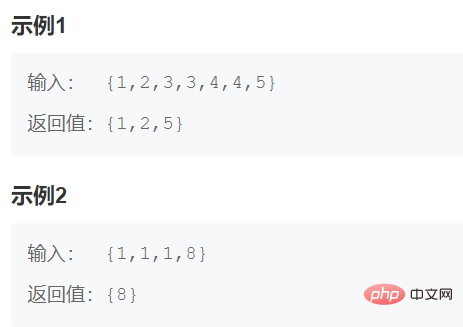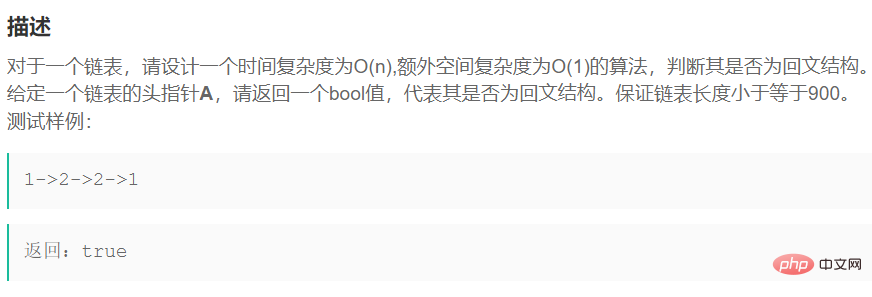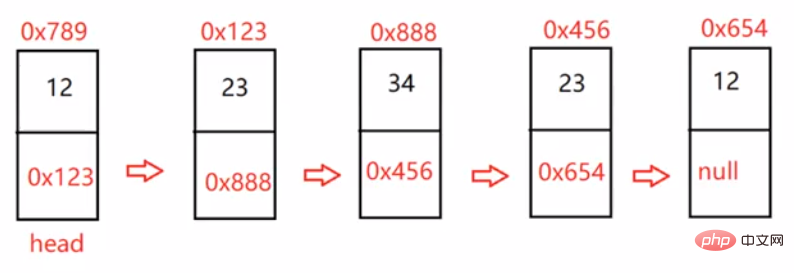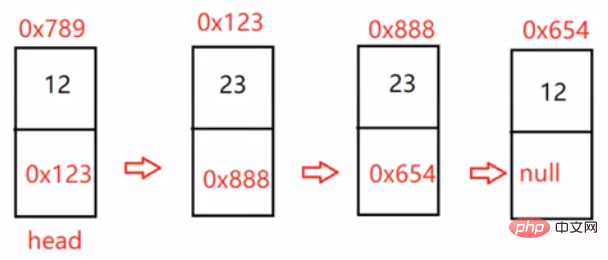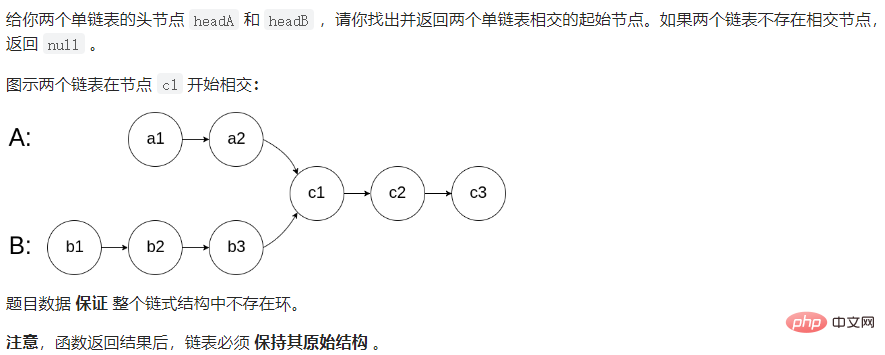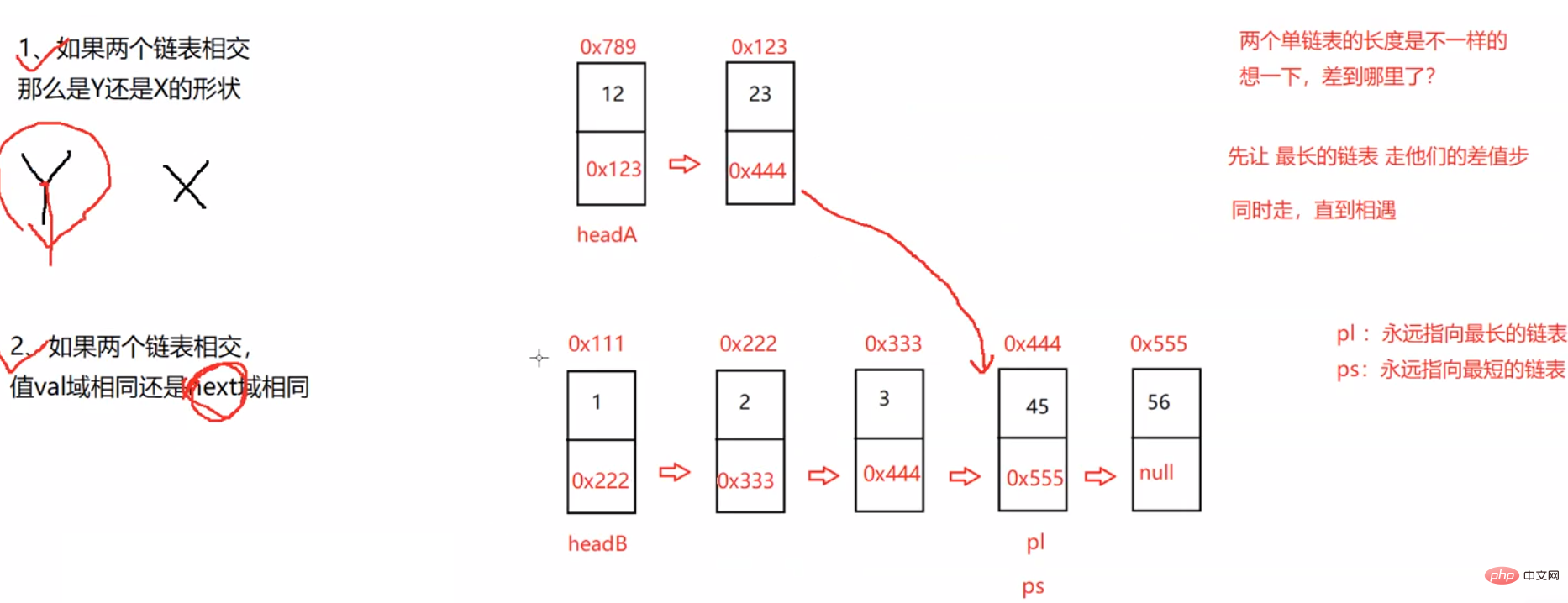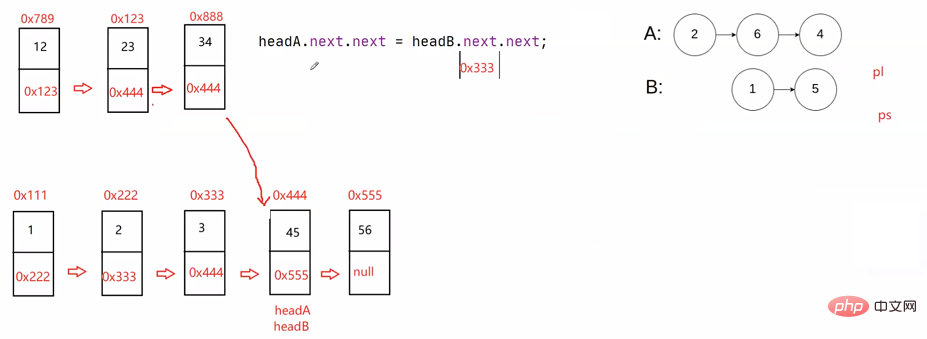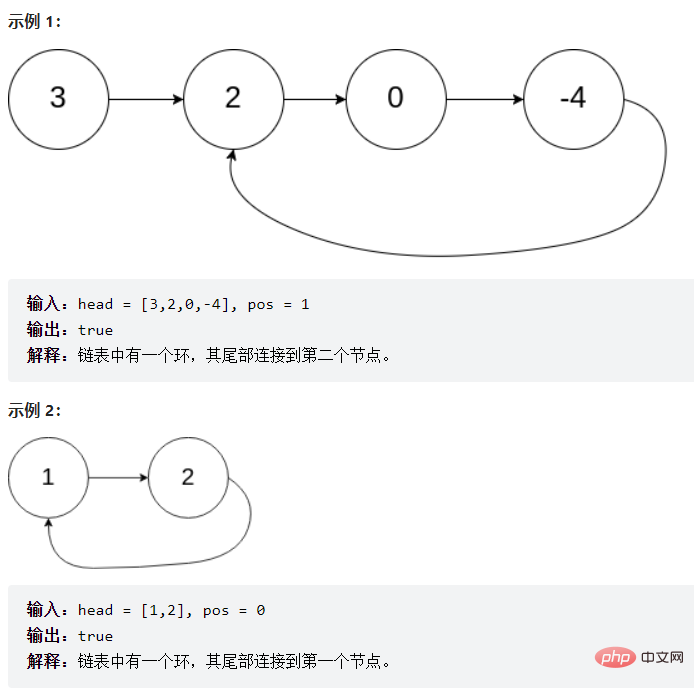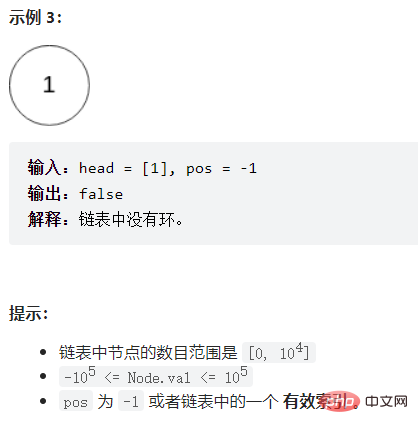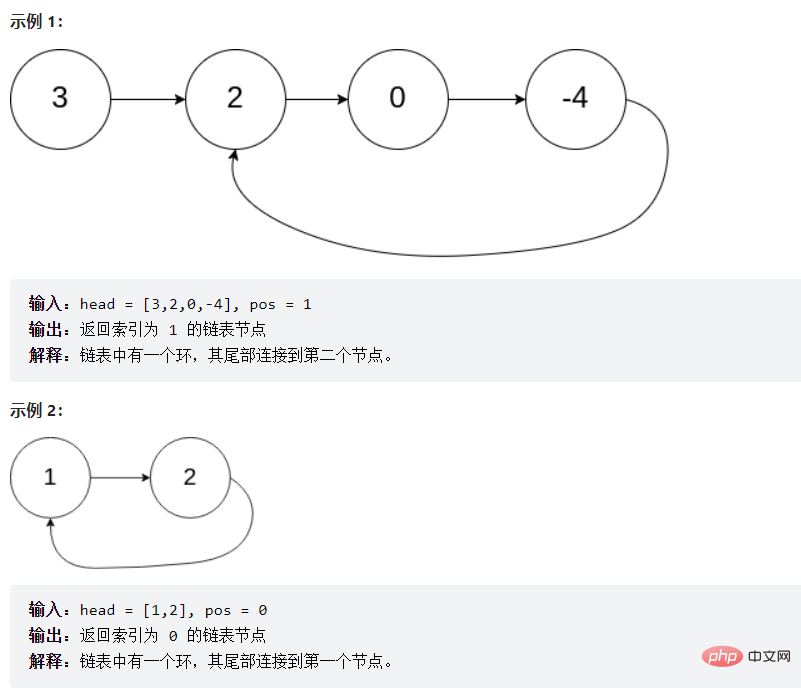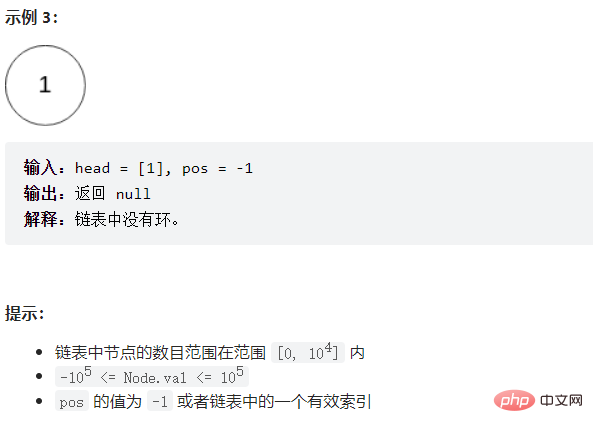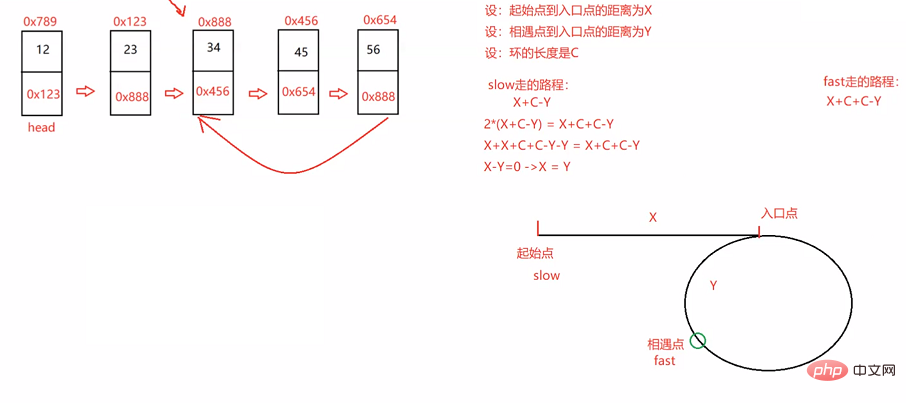 Java
Java
 javaTutorial
javaTutorial
 Penjelasan terperinci tentang senarai jujukan Java dan senarai terpaut dengan contoh
Penjelasan terperinci tentang senarai jujukan Java dan senarai terpaut dengan contoh
Penjelasan terperinci tentang senarai jujukan Java dan senarai terpaut dengan contoh
Artikel ini membawa anda pengetahuan yang berkaitan tentang java, yang terutamanya memperkenalkan kandungan yang berkaitan tentang jadual jujukan dan senarai terpaut Jadual jujukan ialah tatasusunan, yang disimpan secara berterusan dengan alamat fizikal struktur linear elemen data dalam urutan. Mari kita lihat padanya.

Pembelajaran yang disyorkan: "tutorial video java"
1 >
Senarai linear ialah jujukan terhingga bagi n elemen data dengan ciri yang sama. Jadual linear ialah struktur data yang digunakan secara meluas dalam amalan Jadual linear biasa: senarai berjujukan, senarai terpaut, tindanan, baris gilir, rentetan...Jadual linear ialah struktur linear secara logik, iaitu garis lurus berterusan. . Walau bagaimanapun, struktur fizikal tidak semestinya berterusan Apabila jadual linear disimpan secara fizikal, ia biasanya disimpan dalam bentuk tatasusunan dan struktur terpaut.
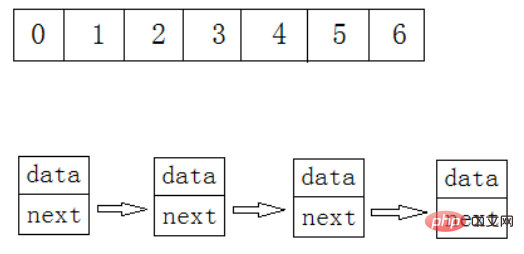
2. Jadual jujukan sebenarnya ialah tatasusunan
. [Tambah, padam, semak dan ubah suai] Kemudian mengapa anda masih menulis jadual jujukan Hanya menggunakan tatasusunan secara langsung? Ia berbeza jika anda menulisnya dalam kelas, anda boleh berorientasikan objek pada masa hadapan.
2.1 Konsep dan struktur Jadual jujukan ialah struktur linear yang menggunakan unit storan dengan alamat fizikal berterusan untuk menyimpan data elemen dalam urutan Umumnya, storan tatasusunan digunakan. Lengkapkan penambahan, pemadaman, penyemakan dan pengubahsuaian data pada tatasusunan.
Jadual jujukan secara amnya boleh dibahagikan kepada:
Jadual jujukan statik: Gunakan storan tatasusunan panjang tetap.
- Jadual jujukan dinamik: Gunakan storan tatasusunan yang dibuka secara dinamik.
- Jadual jujukan statik sesuai untuk senario yang anda tahu jumlah data yang perlu disimpan.
2.2 Pelaksanaan antara mukaMari laksanakan jadual jujukan dinamik Berikut ialah antara muka yang perlu disokong.
Di sini kami membongkarnya satu demi satu: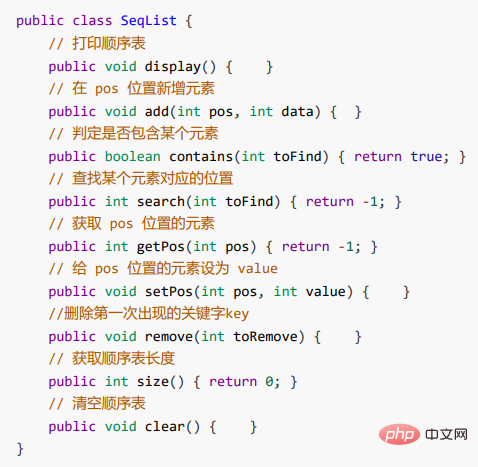
public class MyArrayList {
public int[] elem;
public int usedSize;//有效的数据个数
public MyArrayList() {
this.elem = new int[10];
}
// 打印顺序表public void display() {
}
System.out.println();}// 获取顺序表长度public int size() {
return 0;}// 在 pos 位置新增元素public void add(int pos, int data) {}// 判定是否包含某个元素public boolean contains(int toFind) {
return true;}// 查找某个元素对应的位置public int search(int toFind) {
return -1;}// 获取 pos 位置的元素public int getPos(int pos) {
return -1;}// 给 pos 位置的元素设为 valuepublic void setPos(int pos, int value) {}//删除第一次出现的关键字keypublic void remove(int toRemove) {}// 清空顺序表public void clear() {}}public void display() {
for (int i = 0; i < this.usedSize; i++) {
System.out.print(this.elem[i] + " ");
}
System.out.println();}public int size() {
return this.usedSize;}public void add(int pos, int data) {
if(pos < 0 || pos > this.usedSize) {
System.out.println("pos 位置不合法");
return;
}
if(isFull()){
this.elem = Arrays.copyOf(this.elem,2*this.elem.length);
}
for (int i = this.usedSize-1; i >= pos; i--) {
this.elem[i + 1] = this.elem[i];
}
this.elem[pos] = data;
this.usedSize++;}//判断数组元素是否等于有效数据个数public boolean isFull() {
return this.usedSize == this.elem.length;}public boolean contains(int toFind) {
for (int i = 0; i < this.usedSize; i++) {
if (this.elem[i] == toFind) {
return true;
}
}
return false;}public int search(int toFind) {
for (int i = 0; i < this.usedSize; i++) {
if (this.elem[i] == toFind) {
return i;
}
}
return -1;}public int getPos(int pos) {
if (pos < 0 || pos >= this.usedSize){
System.out.println("pos 位置不合法");
return -1;//所以 这里说明一下,业务上的处理,这里不考虑
}
if(isEmpty()) {
System.out.println("顺序表为空!");
return -1;
}
return this.elem[pos];}//判断数组链表是否为空public boolean isEmpty() {
return this.usedSize == 0;}public void setPos(int pos, int value) {
if(pos < 0 || pos >= this.usedSize) {
System.out.println("pos 位置不合法");
return;
}
if(isEmpty()) {
System.out.println("顺序表为空!");
return;
}
this.elem[pos] = value;}//判断数组链表是否为空public boolean isEmpty() {
return this.usedSize == 0;}public void remove(int toRemove) {
if(isEmpty()) {
System.out.println("顺序表为空!");
return;
}
int index = search(toRemove);//index记录删除元素的位置
if(index == -1) {
System.out.println("没有你要删除的数字!");
}
for (int i = index; i < this.usedSize - 1; i++) {
this.elem[i] = this.elem[i + 1];
}
this.usedSize--;
//this.elem[usedSize] = null;引用数组必须这样做才可以删除}public void clear() {
this.usedSize = 0;}Sisipan ke tengah/kepala jujukan pemadaman jadual, kerumitan masa ialah O(N)
Meningkatkan kapasiti memerlukan permohonan untuk ruang baharu, menyalin data dan melepaskan ruang lama. Akan ada banyak penggunaan.
Peluasan kapasiti secara amnya meningkat sebanyak 2 kali ganda, yang pasti akan membawa kepada sejumlah ruang yang terbuang. Sebagai contoh, kapasiti semasa ialah 100, dan apabila ia penuh, kapasiti meningkat kepada 200. Kami terus memasukkan 5 data, dan tiada data akan dimasukkan kemudian, jadi 95 ruang data terbuang.
- Berfikir: Bagaimana untuk menyelesaikan masalah di atas? Struktur senarai terpaut diberikan di bawah untuk dilihat.
3. Senarai terpaut
3.1 Konsep dan struktur senarai terpaut
Senarai terpaut list ialah Struktur storan fizikal bukan berterusanstruktur storan
tertib logikelemen data direalisasikan melalui susunan pautan rujukan dalam senarai terpaut.
Sebenarnya, struktur senarai terpaut sangat pelbagai Jika dibahagikan secara amnya, terdapat empat jenis:
Satu-. senarai terpaut cara
Senarai terpaut dua hala
Senarai pautan bulat
Senarai terpaut dua hala senarai pautan bulat
-
Jika dipecah bahagi, terdapat 8 jenis struktur senarai terpaut dalam situasi berikut:
Memimpin, tidak mendahului
- Gelung , bukan kitaran Lapan jenis ialah:
Memimpin sehala kitaran
Sehala tanpa kitaran utama
Sehala mendahului bukan kitaran
Bukan kitaran bukan peneraju sehalaGelung pendahuluan dua hala
Bukan pendahuluan dua hala gelung
Bukan gelung terarah dua hala
- Bukan gelung bukan peneraju dua hala
-
Nota: Perkataan yang dicetak tebal di atas adalah perkara yang perlu kita pelajari! ! !



虽然有这么多的链表的结构,但是我们重点掌握两种:
- 无头单向非循环链表:结构简单,一般不会单独用来存数据。实际中更多是作为其他数据结构的子结构,如哈希桶、图的邻接表等等。另外这种结构在笔试面试中出现很多。


head:里面存储的就是第一个节点(头节点)的地址
head.next:存储的就是下一个节点的地址
尾结点:它的next域是一个null
- 无头双向链表:在Java的集合框架库中LinkedList底层实现就是无头双向循环链表。

最上面的数字是我们每一个数值自身的地址。
prev:指向前一个元素地址
next:下一个节点地址
data:数据
3.2 链表的实现
3.2.1无头单向非循环链表的实现

上面地址为改结点元素的地址
val:数据域
next:下一个结点的地址
head:里面存储的就是第一个结点(头结点)的地址
head.next:存储的就是下一个结点的地址
无头单向非循环链表实现:
class ListNode { public int val; public ListNode next;//ListNode储存的是结点类型 public ListNode (int val) { this.val = val; }}public class MyLinkedList { public ListNode head;//链表的头引用 public void creatList() { ListNode listNode1 = new ListNode(12); ListNode listNode2 = new ListNode(23); ListNode listNode3 = new ListNode(34); ListNode listNode4 = new ListNode(45); ListNode listNode5 = new ListNode(56); listNode1.next = listNode2; listNode2.next = listNode3; listNode3.next = listNode4; listNode4.next = listNode5; this.head = listNode1; } //查找是否包含关键字key是否在单链表当中 public boolean contains(int key) { return true; } //得到单链表的长度 public int size(){ return -1; } //头插法 public void addFirst(int data) { } //尾插法 public void addLast(int data) { } //任意位置插入,第一个数据节点为0号下标 public boolean addIndex(int index,int data) { return true; } //删除第一次出现关键字为key的节点 public void remove(int key) { } //删除所有值为key的节点 public ListNode removeAllKey(int key) { } //打印链表中的所有元素 public void display() { } //清除链表中所有元素 public void clear() { }}Salin selepas log masuk上面是我们链表的初步结构(未给功能赋相关代码,大家可以复制他们到自己的idea中进行练习,答案在下文中) 这里我们将他们一个一个拿出来实现 并实现!
打印链表中所有元素:
public void display() { ListNode cur = this.head; while(cur != null) { System.out.print(cur.val + " "); cur = cur.next; } System.out.println();}Salin selepas log masuk查找是否包含关键字key是否在单链表当中:
public boolean contains(int key) { ListNode cur = this.head; while (cur != null) { if (cur.val == key) { return true; } cur = cur.next; } return false;}Salin selepas log masuk得到单链表的长度:
public int size(){ int count = 0; ListNode cur = this.head; while (cur != null) { count++; cur = cur.next; } return count;}Salin selepas log masuk头插法(一定要记住 绑定位置时一定要先绑定后面的数据 避免后面数据丢失):
public void addFirst(int data) { ListNode node = new ListNode(data); node.next = this.head; this.head = node; /*if (this.head == null) { this.head = node; } else { node.next = this.head; this.head = node; }*/}Salin selepas log masuk尾插法:
public void addLast(int data) { ListNode node = new ListNode(data); if (this.head == null) { this.head = node; } else { ListNode cur = this.head; while (cur.next != null) { cur = cur.next; } cur.next = node; }}Salin selepas log masuk任意位置插入,第一个数据结点为0号下标(插入到index后面一个位置):

/** * 找到index - 1位置的节点的地址 * @param index * @return */public ListNode findIndex(int index) { ListNode cur = this.head; while (index - 1 != 0) { cur = cur.next; index--; } return cur;}//任意位置插入,第一个数据节点为0号下标public void addIndex(int index,int data) { if(index < 0 || index > size()) { System.out.println("index 位置不合法!"); return; } if(index == 0) { addFirst(data); return; } if(index == size()) { addLast(data); return; } ListNode cur = findIndex(index); ListNode node = new ListNode(data); node.next = cur.next; cur.next = node;}Salin selepas log masuk注意:单向链表找cur时要-1,但双向链表不用 直接返回cur就好
删除第一次出现关键字为key的结点:
/** * 找到 要删除的关键字key的节点 * @param key * @return */public ListNode searchPerv(int key) { ListNode cur = this.head; while(cur.next != null) { if(cur.next.val == key) { return cur; } cur = cur.next; } return null;}//删除第一次出现关键字为key的节点public void remove(int key) { if(this.head == null) { System.out.println("单链表为空"); return; } if(this.head.val == key) { this.head = this.head.next; return; } ListNode cur = searchPerv(key); if(cur == null) { System.out.println("没有你要删除的节点"); return; } ListNode del = cur.next; cur.next = del.next;}Salin selepas log masuk删除所有值为key的结点:
public ListNode removeAllKey(int key) { if(this.head == null) { return null; } ListNode prev = this.head; ListNode cur = this.head.next; while(cur != null) { if(cur.val == key) { prev.next = cur.next; cur = cur.next; } else { prev = cur; cur = cur.next; } } //最后处理头 if(this.head.val == key) { this.head = this.head.next; } return this.head;}Salin selepas log masuk清空链表中所有元素:
public void clear() { while (this.head != null) { ListNode curNext = head.next; head.next = null; head.prev = null; head = curNext; } last = null;}Salin selepas log masukSalin selepas log masuk3.2.2无头双向非循环链表实现:

上面的地址0x888为该结点的地址
val:数据域
prev:上一个结点地址
next:下一个结点地址
head:头结点 一般指向链表的第一个结点

class ListNode { public int val; public ListNode prev; public ListNode next; public ListNode (int val) { this.val = val; }}public class MyLinkedList { public ListNode head;//指向双向链表的头结点 public ListNode last;//只想双向链表的尾结点 //打印链表 public void display() { } //得到单链表的长度 public int size() { return -1; } //查找是否包含关键字key是否在单链表当中 public boolean contains(int key) { return true; } //头插法 public void addFirst(int data) { } //尾插法 public void addLast(int data) { } //删除第一次出现关键字为key的节点 public void remove(int key) { } //删除所有值为key的节点 public void removeAllKey(int key) { } //任意位置插入,第一个数据节点为0号下标 public boolean addIndex(int index,int data) { return true; } //清空链表 public void clear() { }}Salin selepas log masuk上面是我们链表的初步结构(未给功能赋相关代码,大家可以复制他们到自己的idea中进行练习,答案在下文中) 这里我们将他们一个一个拿出来实现 并实现!
打印链表:
public void display() { ListNode cur = this.head; while (cur != null) { System.out.print(cur.val + " "); cur = cur.next; } System.out.println();}Salin selepas log masuk得到单链表的长度:
public int size() { ListNode cur = this.head; int count = 0; while (cur != null) { count++; cur = cur.next; } return count;}Salin selepas log masuk查找是否包含关键字key是否在单链表当中:
public boolean contains(int key) { ListNode cur = this.head; while (cur != null) { if (cur.val == key) { return true; } cur = cur.next; } return false;}Salin selepas log masuk头插法:
public void addFirst(int data) { ListNode node = new ListNode(data); if (this.head == null) { this.head = node; this.last = node; } else { node.next = this.head; this.head.prev = node; this.head = node; }}Salin selepas log masuk尾插法:
public void addLast(int data) { ListNode node = new ListNode(data); if (this.head == null) { this.head = node; this.last = node; } else { ListNode lastPrev = this.last; this.last.next = node; this.last = this.last.next; this.last.prev = lastPrev; /** * 两种方法均可 * this.last.next = node; * node.prev = this.last; * this.last = node; */ }}Salin selepas log masuk注:第一种方法是先让last等于尾结点 再让他的前驱等于上一个地址 而第二种方法是先使插入的尾结点的前驱等于上一个地址 再使其等于尾结点
删除第一次出现关键字为key的结点:
public void remove(int key) { ListNode cur = this.head; while (cur != null) { if (cur.val == key) { if (cur == head) { head = head.next; if (head != null) { head.prev = null; } else { last = null; } } else if (cur == last) { last = last.prev; last.next = null; } else { cur.prev.next = cur.next; cur.next.prev = cur.prev; } return; } cur = cur.next; }}Salin selepas log masuk删除所有值为key的结点:
public void removeAllKey(int key) { ListNode cur = this.head; while (cur != null) { if (cur.val == key) { if (cur == head) { head = head.next; if (head != null) { head.prev = null; } else { last = null; } } else if (cur == last) { last = last.prev; last.next = null; } else { cur.prev.next = cur.next; cur.next.prev = cur.prev; } //return; } cur = cur.next; }}Salin selepas log masuk注:他和remove的区别就是删除完后是不是直接return返回,如果要删除所有的key值则不return,让cur继续往后面走。
任意位置插入,第一个数据节点为0号下标:
public void addIndex(int index,int data) { if (index < 0 || index > size()) { System.out.println("index 位置不合法"); } if (index == 0) { addFirst(data); return; } if (index == size()) { addLast(data); return; } ListNode cur = searchIndex(index); ListNode node = new ListNode(data); node.next = cur; cur.prev.next = node; node.prev = cur.prev; cur.prev = node;}public ListNode searchIndex(int index) { ListNode cur = this.head; while (index != 0) { cur = cur.next; index--; } return cur;}Salin selepas log masuk思路:先判断 在头位置就头插 在尾位置就尾插 在中间就改变四个位置的值。
注意:单向链表找cur时要-1,但双向链表不用 直接返回cur就好
清空链表:
public void clear() { while (this.head != null) { ListNode curNext = head.next; head.next = null; head.prev = null; head = curNext; } last = null;}Salin selepas log masukSalin selepas log masuk3.3 链表面试题
3.3.1反转链表:


这里的
cur = this.head;
prev = null;
curNext = cur.next;

public ListNode reverseList() { if (this.head == null) { return null; } ListNode cur = this.head; ListNode prev = null; while (cur != null) { ListNode curNext = cur.next; cur.next = prev; prev = cur; cur = curNext; } return prev;}Salin selepas log masuk3.3.2找到链表的中间结点:



public ListNode middleNode() { if (head == null) { return null; } ListNode fast = head; ListNode slow = head; while (fast != null && fast.next != null) { fast = fast.next.next; if (fast == null) { return slow; } slow = slow.next; } return slow;}Salin selepas log masuk3.3.3输入一个链表 返回该链表中倒数第k个结点


public ListNode findKthToTail(ListNode head,int k) { if (k <= 0 || head == null) { return null; } ListNode fast = head; ListNode slow = head; while (k - 1 != 0) { fast = fast.next; if (fast == null) { return null; } k--; } while (fast.next != null) { fast = fast.next; slow = slow.next; } return slow;}Salin selepas log masuk3.3.4合并两个链表 并变成有序的



public static ListNode mergeTwoLists(ListNode headA,ListNode headB) { ListNode newHead = new ListNode(-1); ListNode tmp = newHead; while (headA != null && headB != null) { if(headA.val <headB.val) { tmp.next = headA; headA = headA.next; tmp = tmp.next; } else { tmp.next = headB; headB = headB.next; tmp = tmp.next; } } if (headA != null) { tmp.next = headA; } if (headB != null) { tmp.next = headB; } return newHead.next;}Salin selepas log masuk最后返回的是傀儡结点的下一个 即
newHead.next3.3.5 编写代码,以给定值x为基准将链表分割成两部分,所有小于x的结点排在大于或等于x的结点之前 。(即将所有小于x的放在x左边,大于x的放在x右边。且他们本身的排序不可以变)



//按照x和链表中元素的大小来分割链表中的元素public ListNode partition(int x) { ListNode bs = null; ListNode be = null; ListNode as = null; ListNode ae = null; ListNode cur = head; while (cur != null) { if(cur.val < x){ //1、第一次 if (bs == null) { bs = cur; be = cur; } else { //2、不是第一次 be.next = cur; be = be.next; } } else { //1、第一次 if (as == null) { as = cur; as = cur; } else { //2、不是第一次 ae.next = cur; ae = ae.next; } } cur = cur.next; } //预防第1个段为空 if (bs == null) { return as; } be.next = as; //预防第2个段当中的数据,最后一个节点不是空的。 if (as != null) { ae.next = null; } return be;}Salin selepas log masuk3.3.6 在一个排序的链表中,存在重复的结点,请删除该链表中重复的结点,重复的结点不保留,返回链表头指针。(有序的链表中重复的结点一定是紧紧挨在一起的)



public ListNode deleteDuplication() { ListNode cur = head; ListNode newHead = new ListNode(-1); ListNode tmp = newHead; while (cur != null) { if (cur.next != null && cur.val == cur.next.val) { while (cur.next != null && cur.val == cur.next.val) { cur = cur.next; } //多走一步 cur = cur.next; } else { tmp.next = cur; tmp = tmp.next; cur = cur.next; } } //防止最后一个结点的值也是重复的 tmp.next = null; return newHead.next;}Salin selepas log masuk3.3.7 链表的回文结构。




public boolean chkPalindrome(ListNode head) { if (head == null) { return true; } ListNode fast = head; ListNode slow = head; while (fast != null && fast.next != null) { fast = fast.next.next; slow = slow.next; } //slow走到了中间位置 ListNode cur = slow.next; while (cur != null) { ListNode curNext = cur.next; cur.next = slow; slow = cur; cur = curNext; } //反转完成 while (head != slow) { if(head.val != slow.val) { return false; } else { if (head.next == slow) { return true; } head = head.next; slow = slow.next; } return true; } return true;}Salin selepas log masuk3.3.8 输入两个链表,找出它们的第一个公共结点。

他是一个Y字形


public ListNode getIntersectionNode(ListNode headA, ListNode headB) { if (headA == null || headB == null) { return null; } ListNode pl = headA; ListNode ps = headB; int lenA = 0; int lenB = 0; //求lenA的长度 while (pl != null) { lenA++; pl = pl.next; } pl = headA; //求lenB的长度 while (ps != null) { lenB++; ps = ps.next; } ps = headB; int len = lenA - lenB;//差值步 if (len < 0) { pl = headB; ps = headA; len = lenB - lenA; } //1、pl永远指向了最长的链表,ps永远指向了最短的链表 2、求到了插值len步 //pl走差值len步 while (len != 0) { pl = pl.next; len--; } //同时走直到相遇 while (pl != ps) { pl = pl.next; ps = ps.next; } return pl;}Salin selepas log masuk3.3.9 给定一个链表,判断链表中是否有环。



提问:为啥么fast一次走两步,不走三步?
答:如果链表只有两个元素他们则永远相遇不了(如上图的示例2),而且走三步的效率没有走两步的效率高。
public boolean hasCycle(ListNode head) { if (head == null) { return false; } ListNode fast = head; ListNode slow = head; while (fast != null && fast.next != null) { fast = fast.next.next; slow = slow.next; if (fast == slow) { return true; } } return false;}Salin selepas log masuk3.3.10 给定一个链表,返回链表开始入环的第一个节点。 如果链表无环,则返回 null





public ListNode detectCycle(ListNode head) { if (head == null) { return null; } ListNode fast = head; ListNode slow = head; while (fast != null && fast.next != null) { fast = fast.next.next; slow = slow.next; if (fast == slow) { break; } } if (fast == null || fast.next == null) { return null; } fast = head; while (fast != slow) { fast = fast.next; slow = slow.next; } return fast;}Salin selepas log masuk4. 顺序表和链表的区别和联系
4.1顺序表和链表的区别
顺序表:一白遮百丑
白:空间连续、支持随机访问
丑:
中间或前面部分的插入删除时间复杂度O(N)
增容的代价比较大。
链表:一(胖黑)毁所有
胖黑:以节点为单位存储,不支持随机访问
所有:
任意位置插入删除时间复杂度为O(1)
没有增容问题,插入一个开辟一个空间。
组织:
1、顺序表底层是一个数组,他是一个逻辑上和物理上都是连续的
2、链表是一个由若干结点组成的一个数据结构,逻辑上是连续的 但是在物理上[内存上]是不一定连续的。
操作:
1、顺序表适合,查找相关的操作,因为可以使用下标,直接获取到某个位置的元素
2、链表适合于,频繁的插入和删除操作。此时不需要像顺序表一样,移动元素。链表的插入 只需要修改指向即可。
3、顺序表还有不好的地方,就是你需要看满不满,满了要扩容,扩容了之后,不一定都能放完。所以,他空间上的利用率不高。
4.2数组和链表的区别
链表随用随取 要一个new一个
而数组则不一样 数组是一开始就确定好的
4.3AeeayList和LinkedList的区别
集合框架当中的两个类
集合框架就是将 所有的数据结构,封装成Java自己的类
以后我们要是用到顺序表了 直接使用ArrayList就可以。
推荐学习:《java视频教程》
Atas ialah kandungan terperinci Penjelasan terperinci tentang senarai jujukan Java dan senarai terpaut dengan contoh. Untuk maklumat lanjut, sila ikut artikel berkaitan lain di laman web China PHP!

Alat AI Hot

Undresser.AI Undress
Apl berkuasa AI untuk mencipta foto bogel yang realistik

AI Clothes Remover
Alat AI dalam talian untuk mengeluarkan pakaian daripada foto.

Undress AI Tool
Gambar buka pakaian secara percuma

Clothoff.io
Penyingkiran pakaian AI

AI Hentai Generator
Menjana ai hentai secara percuma.

Artikel Panas

Alat panas

Notepad++7.3.1
Editor kod yang mudah digunakan dan percuma

SublimeText3 versi Cina
Versi Cina, sangat mudah digunakan

Hantar Studio 13.0.1
Persekitaran pembangunan bersepadu PHP yang berkuasa

Dreamweaver CS6
Alat pembangunan web visual

SublimeText3 versi Mac
Perisian penyuntingan kod peringkat Tuhan (SublimeText3)

Topik panas
 1377
1377
 52
52
 Nombor Sempurna di Jawa
Aug 30, 2024 pm 04:28 PM
Nombor Sempurna di Jawa
Aug 30, 2024 pm 04:28 PM
Panduan Nombor Sempurna di Jawa. Di sini kita membincangkan Definisi, Bagaimana untuk menyemak nombor Perfect dalam Java?, contoh dengan pelaksanaan kod.
 Penjana Nombor Rawak di Jawa
Aug 30, 2024 pm 04:27 PM
Penjana Nombor Rawak di Jawa
Aug 30, 2024 pm 04:27 PM
Panduan untuk Penjana Nombor Rawak di Jawa. Di sini kita membincangkan Fungsi dalam Java dengan contoh dan dua Penjana berbeza dengan contoh lain.
 Weka di Jawa
Aug 30, 2024 pm 04:28 PM
Weka di Jawa
Aug 30, 2024 pm 04:28 PM
Panduan untuk Weka di Jawa. Di sini kita membincangkan Pengenalan, cara menggunakan weka java, jenis platform, dan kelebihan dengan contoh.
 Nombor Smith di Jawa
Aug 30, 2024 pm 04:28 PM
Nombor Smith di Jawa
Aug 30, 2024 pm 04:28 PM
Panduan untuk Nombor Smith di Jawa. Di sini kita membincangkan Definisi, Bagaimana untuk menyemak nombor smith di Jawa? contoh dengan pelaksanaan kod.
 Soalan Temuduga Java Spring
Aug 30, 2024 pm 04:29 PM
Soalan Temuduga Java Spring
Aug 30, 2024 pm 04:29 PM
Dalam artikel ini, kami telah menyimpan Soalan Temuduga Spring Java yang paling banyak ditanya dengan jawapan terperinci mereka. Supaya anda boleh memecahkan temuduga.
 Cuti atau kembali dari Java 8 Stream Foreach?
Feb 07, 2025 pm 12:09 PM
Cuti atau kembali dari Java 8 Stream Foreach?
Feb 07, 2025 pm 12:09 PM
Java 8 memperkenalkan API Stream, menyediakan cara yang kuat dan ekspresif untuk memproses koleksi data. Walau bagaimanapun, soalan biasa apabila menggunakan aliran adalah: bagaimana untuk memecahkan atau kembali dari operasi foreach? Gelung tradisional membolehkan gangguan awal atau pulangan, tetapi kaedah Foreach Stream tidak menyokong secara langsung kaedah ini. Artikel ini akan menerangkan sebab -sebab dan meneroka kaedah alternatif untuk melaksanakan penamatan pramatang dalam sistem pemprosesan aliran. Bacaan Lanjut: Penambahbaikan API Java Stream Memahami aliran aliran Kaedah Foreach adalah operasi terminal yang melakukan satu operasi pada setiap elemen dalam aliran. Niat reka bentuknya adalah
 TimeStamp to Date in Java
Aug 30, 2024 pm 04:28 PM
TimeStamp to Date in Java
Aug 30, 2024 pm 04:28 PM
Panduan untuk TimeStamp to Date di Java. Di sini kita juga membincangkan pengenalan dan cara menukar cap waktu kepada tarikh dalam java bersama-sama dengan contoh.
 Cipta Masa Depan: Pengaturcaraan Java untuk Pemula Mutlak
Oct 13, 2024 pm 01:32 PM
Cipta Masa Depan: Pengaturcaraan Java untuk Pemula Mutlak
Oct 13, 2024 pm 01:32 PM
Java ialah bahasa pengaturcaraan popular yang boleh dipelajari oleh pembangun pemula dan berpengalaman. Tutorial ini bermula dengan konsep asas dan diteruskan melalui topik lanjutan. Selepas memasang Kit Pembangunan Java, anda boleh berlatih pengaturcaraan dengan mencipta program "Hello, World!" Selepas anda memahami kod, gunakan gesaan arahan untuk menyusun dan menjalankan program, dan "Hello, World!" Pembelajaran Java memulakan perjalanan pengaturcaraan anda, dan apabila penguasaan anda semakin mendalam, anda boleh mencipta aplikasi yang lebih kompleks.




